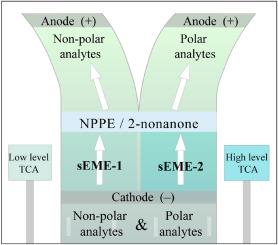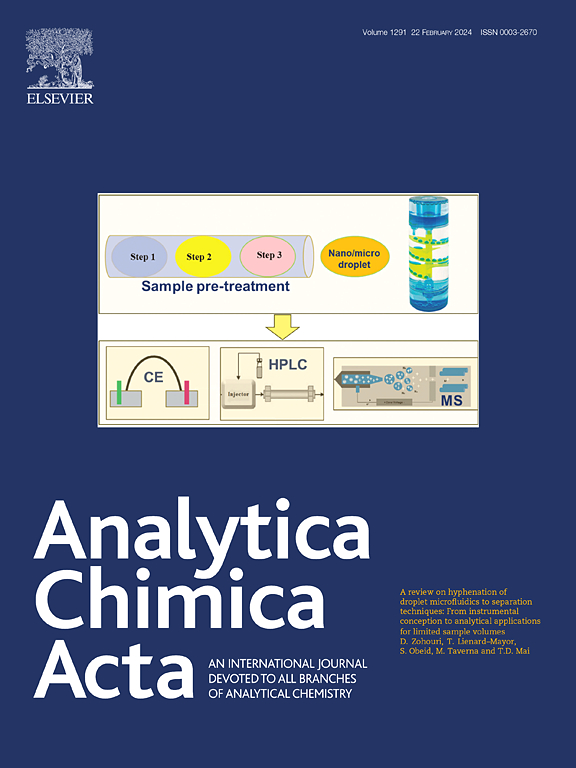Successive electromembrane extraction: A new insight in simultaneous extraction of polar and non-polar metabolic molecules from biological samples
IF 5.7
2区 化学
Q1 CHEMISTRY, ANALYTICAL
引用次数: 0
Abstract
Background
Simultaneous determination of different natures of analytes is of great significance for saving sample volumes and simplifying analytical procedures. However, sample preparation for the simultaneous extraction of polar and non-polar analytes represents a challenge in sample preparation. Inspired by the successive liquid-phase microextraction (sLPME) method for acidic and basic analytes that we previously developed, we first proposed an efficient successive electromembrane extraction (sEME) system by adjusting the acidity of the donor solution and using binary organic solvents for extraction of polar and non-polar targets from biological samples in this work.Results
We performed a detailed optimization of the sEME system. Here, carnitine (C0) and acylcarnitines were selected as model analytes since the demand increased especially in metabolomics studies. The combination of 2-nonanone and 2-nitrophenylpentyl ether (NPPE) was selected as supported liquid membranes (SLMs), and trichloroacetic acid (TCA) 100% (v/v) was added to donor solution to adjust the acidity of the donor solution after the first sEME process (sEME-1). The recoveries of the targets in blood and urine were 47%-119% and 54%-118%, respectively. Moreover, the sEME systems were evaluated by liquid chromatography tandem mass spectrometry (LC-MS/MS) from biological samples. The limit of detection (LOD) and limit of quantitation (LOQ) of analytes were 0.03-1.33 ng mL-1 and 0.09-4.42 ng mL-1, respectively.Significance
sEME enabled the extraction of polar and non-polar analytes from the same sample under optimal extraction conditions for all target analytes, which provided ideas for efficient sEME of exogenous and endogenous analytes from biological samples for forensic, clinical, and epidemiological studies.

求助全文
约1分钟内获得全文
求助全文
来源期刊

Analytica Chimica Acta
化学-分析化学
CiteScore
10.40
自引率
6.50%
发文量
1081
审稿时长
38 days
期刊介绍:
Analytica Chimica Acta has an open access mirror journal Analytica Chimica Acta: X, sharing the same aims and scope, editorial team, submission system and rigorous peer review.
Analytica Chimica Acta provides a forum for the rapid publication of original research, and critical, comprehensive reviews dealing with all aspects of fundamental and applied modern analytical chemistry. The journal welcomes the submission of research papers which report studies concerning the development of new and significant analytical methodologies. In determining the suitability of submitted articles for publication, particular scrutiny will be placed on the degree of novelty and impact of the research and the extent to which it adds to the existing body of knowledge in analytical chemistry.
 求助内容:
求助内容: 应助结果提醒方式:
应助结果提醒方式:


